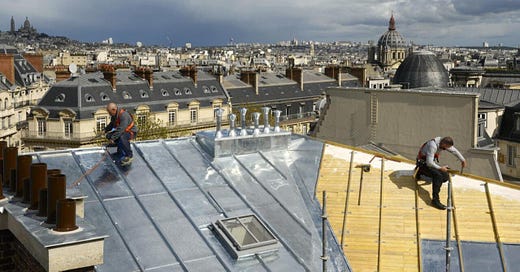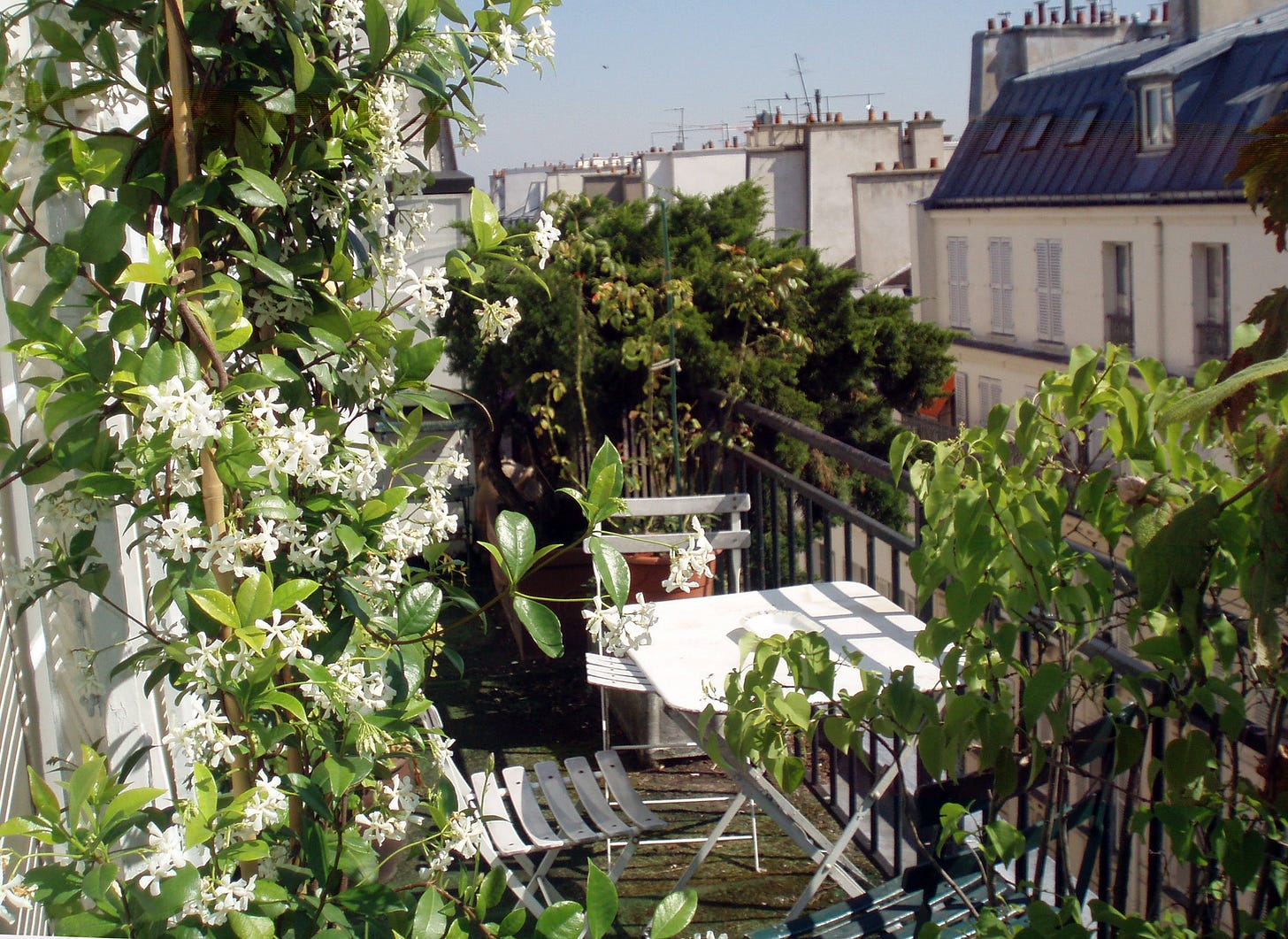“Every man has his natural place,” wrote Jean-Paul Sartre. “Mine is a sixth floor in Paris with a view of the rooftops.”
Mine too, as it happens, since we live in just such an apartment, so can perhaps be forgiven for enjoying a little reflected glory from the decision this week by UNESCO to embrace “the skills of Parisian zinc roofers” as an aspect of the world’s intangible cultural heritage
There have been other attempts to honour the expanse of softly gleaming grey metal on which 78% of Paris apartments look out. (Les toits de Paris made the short list last year but were pipped by that other institution, the baguette.) For reasons for the delay, look no further than our tirelessly crusading mayor, Anne Hidalgo, who, in 2015, then only the mayor of the 9th arrondissement, already opposed the honour.
"I do not want to see Paris preserved in aspic,” she announced in that hectoring tone we have come to know so well, “especially because we want to plant vegetation on the roofs and install solar panels. We want to enable the city's transformation, to prepare for possible temperature rises linked to global warming."
Because of her intervention, UNESCO amended the listing to cover not the roofs but the skill of the workers who created them. As the roof of our building was recently replaced, a process that involved encasing the entire seven floors in scaffolding for six months, bashing holes through walls, littering the terrace with debris, crashing and banging at all hours – not to mention the experience of opening one’s curtains to find large hairy men lurking outside - you will forgive us for seeing these artisans in a slightly jaded light.
Hidalgo does have a point, however. Zinc roofs, introduced by Haussmann in his 19th century redesign of Paris as a more robust and lighter alternative to slate or tile, do heat up in summer, as high as 80 degrees C. But her remedies are worse than the disease. I know from the experience of maintaining our terrace, for example, that piling tons of soil and vegetation over one’s head would just replace one problem with another.
But perhaps I’m being short-sighted. After all, UNESCO already honours such ceremonies as the Sanké mon, a collective fishing rite of the Ségou region of Mali which begins “with the sacrifice of roosters, goats and offerings made by village residents to the water spirits of the Sanké pond. The collective fishing then takes place over fifteen hours. It is immediately followed by a masked dance on the public square.”
Imagine a similar spectacle offered by the rooftop gardeners of Paris. One can imagine us picturesquely clambering over the rooftops to keep our plantations fertilised and watered, no doubt raising our voices in a jolly chanson and flinging bouquets, fruits and, occasionally, ourselves, into the streets below. The Umbrellas of Cherbourg wouldn’t be in the race.






Traditionally, Parisians have dealt with overheated apartments by leaving for a month for cooler climes, hence the empty streets of August. It will be interesting to see if canicules, ie. heat waves, arriving in June/July and lasting into September will change the habits of millenia. That we are having snow in early December when it normally appears, if at all, in February is an ominous harbinger of hotter times. Climatisation, ie: air conditioning, may yet raise its head - as high as some sixth floors anyway.
I remember spending a year under a zinc roof in Paris. Top floor. Slanted walls. It was great, but as you say, when it is 35 outside, the roof is 75. I have never cooked so bad in my life. And air conditioning.... good luck with that. 😁 Hidalgo has done great things for Paris. We will see what she does with this. I think there would be another revolution if she messes with the zink, both on the roof and at the bar.
Thank you for the reminder!